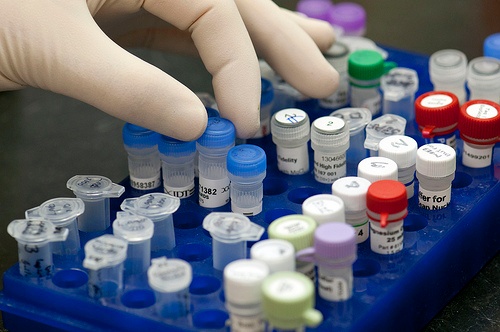The US federal Occupational Safety and Health Administration (OSHA) administers a General Materials Handling Standard (29 CFR 1910.176) that provides general requirements to ensure safe management of materials, including provisions for storage, loading and unloading, and other operational hazards.The remainder of this note summarizes these longstanding requirements.
Audit, Compliance and Risk Blog
Tags: OSHA, workplace safety, Health and Safety Compliance, Occupational Health, Safety Regulations, Health and Safety, Occupational Safety, Materials Handling
On July 1, the US federal Occupational Safety and Health Administration (OSHA) published proposals to revise or repeal more than two dozen of its occupational safety and health standards. OSHA justifies many of these changes as ways to reduce duplicative requirements or increase employers’ flexibility. The remainder of this note identifies these proposals, identifying code sections within OSHA’s General Industry standards (most in 29 CFR 1910 (most proposals also apply to analogous Construction and Maritime standards).
Read MoreTags: Health & Safety, OSHA, Compliance Safety, RegulatoryUpdates, Workplace Safety Guidelines, Risk Management, Safety Standards, EHS Compliance
The US federal Occupational Safety and Health Administration (OSHA) has revised portions of its national enforcement policies, reducing penalties for employers that take prompt action to correct identified violations, and raising the ceiling for special small business penalty reductions from employers with 10 or fewer employees to those with 25 or fewer employees. These revisions appear in Chapter 6 (Penalties and Debt Collection) of OSHA’s Field Operations Manual (FOM). The remainder of this note discusses these revisions.
Read More
Tags: OSHA, Occupational Health, Worker Safety, Workplace Safety Guidelines, Safety Standards, Occupational Safety, Field Operations Manual, FOM
Administration proposes zero budget for Chemical Safety Board
Posted by Jon Elliott on Fri, Aug 08, 2025
Many of the Trump administration’s recent budget requests have proposed reduction in funding for environmental, health and safety (EH&S) agencies (For example I wrote about the environmental Protection Agency (HERE and Occupational Safety and Health Administration HERE ). Most drastically, the administration has proposed ZERO funding for the federal Chemical Safety and Hazard Investigation Board – which usually refers to itself as the Chemical Safety Board or CSB. CSB conducts independent investigations of major chemical accidents, issues accident-specific findings, offers specific or general recommendations for improved chemical handling and regulation, and has enacted a “Chemical Incident Reporting Rule.” (I wrote about the Rule HERE, and compliance guidance HERE). The remainder of this note summarizes CSB’s latest guidance.
Read More
Tags: OSHA, Environmental, EHS, EPA, CSB, Chemical Safety Board, Trump Administration, EHS Compliance, Incident Reporting, Accidental Release Prevention, Process Safety Management, chemical incident investigations
Trump Administration proposes limited cuts in OSHA budget
Posted by Jon Elliott on Fri, Jul 18, 2025
On May 2, the Trump Administration issued its budget proposal for federal Fiscal Year (FY) 2026 (October 1, 2025 through September 30, 2026). The administration proposes a $582,381,000 budget for the Occupational Safety and Health Administration (OSHA), which would be a 7.9% ($49,928,000) decrease from OSHA’s adopted 2025 budget of $632.3 million (the Biden Administration had proposed $655.5 million; I wrote about it HERE). The remainder of this note summarizes the Administration proposal.
Read More
Tags: OSHA, workplace safety, Trump, Trump Administration, Workplace Safety Guidelines, Regulatory Compliance, Safety Standards, FY 2026 Budget, Federal Budget Proposal, Occupational Safety
OSHA reports on most-cited violations in fiscal year 2024
Posted by Jon Elliott on Thu, Jun 26, 2025
The US federal Occupational Safety and Health Administration (OSHA) has reported a list of the top 10 most frequently cited standards following inspections of worksites by federal OSHA for all industries, during federal Fiscal Year (FY 2024). The remainder of this note provides OSHA’s list, with links to the standards (i.e., general industry standards) I’ve written about in other notes.
Read MoreTags: OSHA, Safety and Health at Work, EHSCompliance, Safety Regulations, Worker Safety, Regulatory Compliance, Health and Safety, Fall Prevention, Safety Training
The US federal Occupational Safety and Health Administration (OSHA) conducted its twelfth annual “National Safety Stand-Down to Prevent Falls in Construction” during May 5-9, 2025. The Stand-Down focused on fall hazards and fall prevention, emphasizing safety demonstrations, trainings and hazard recognition activities. Falls are a leading cause of workplace injuries and deaths in construction, and can also be important hazards in non-construction locations where workers use ladders or work in elevated locations. The remainder of this note summarizes approaches to fall hazards and fall protection.
Tags: Health & Safety, OSHA, Safety and Health at Work, workplace safety, Cal/OSHA, Injury, Safety Regulations, Worker Safety, Risk Management, Fall Prevention
Department of Labor reports fewer occupational injuries, illnesses, and deaths last year
Posted by Jon Elliott on Wed, Mar 26, 2025
The US Bureau of Labor Statistics (BLS) compiles data about occupational injuries and illnesses (I&I), and issues annual reports about occupational injuries, illnesses and fatalities. BLS cooperates with Occupational Safety and Health Administration (OSHA) requirements that employers record occupational I&I as they occur, and compile annual I&I logs to inform workers and regulators of overall rates. BLS issued its report for calendar year 2023 in December 2024, highlighting causes and distributions of workplace deaths, and noting that they were lower than in 2022. The rest of this note summarizes how these occupational incidents are reported and counted.
Read MoreTags: Health & Safety, OSHA, EHS, Safety and Health at Work, Injury, Health and Safety Compliance, Workplace Safety Guidelines, Risk Management
New Hampshire becomes latest state to require employers to allow guns at work
Posted by Jon Elliott on Fri, Mar 07, 2025
One important issue for employers to consider in their workplace safety and workplace violence prevention efforts is whether to allow employees to bring weapons to work, and if so whether to place limitations on their storage or handling – locked in an employee’s vehicle, for example. Many employers prohibit weapons on workplace premises, including the US Postal Service via its regulations (39 CFR 232.1.) In recent years, however, increasing numbers of states restrict or even prohibit employers from limiting employee weapons, at least in parked vehicles. Most recently, on January 1, 2025 New Hampshire became the latest state to block employer restrictions.
Read MoreTags: OSHA, Workplace violence, Compliance Safety, workplace safety, Gun Laws
Federal Agencies Adjust Civil Penalty Levels for Inflation
Posted by Jon Elliott on Wed, Feb 12, 2025
Many regulatory laws provide for civil – and sometimes even criminal – penalties for noncompliance. Statutes set penalty levels (“XXX dollars per day of violation” for example), at levels intended to provide meaningful deterrence and punishment for noncompliance. But over time, these penalties' stings decline with inflation. To counteract the possibility that less painful penalties reduce incentives for compliance, U.S. law directs most federal agencies to make annual “cost of living” adjustments to the maximum statutory civil penalty levels (there are no provisions for standing periodic adjustments to criminal penalties).
Read MoreTags: OSHA, EPA, regulatory registers, RegulatoryUpdates, EnviromentalCompliance, EHSCompliance










